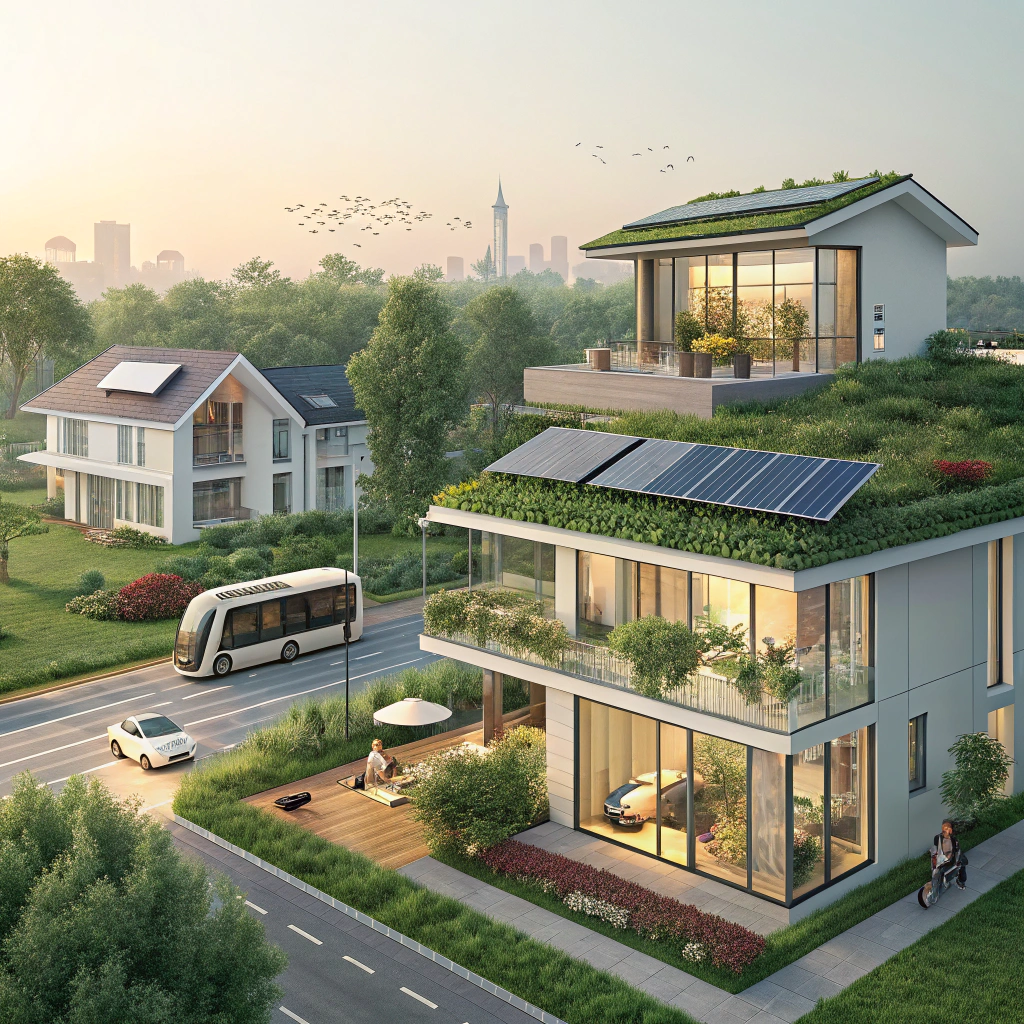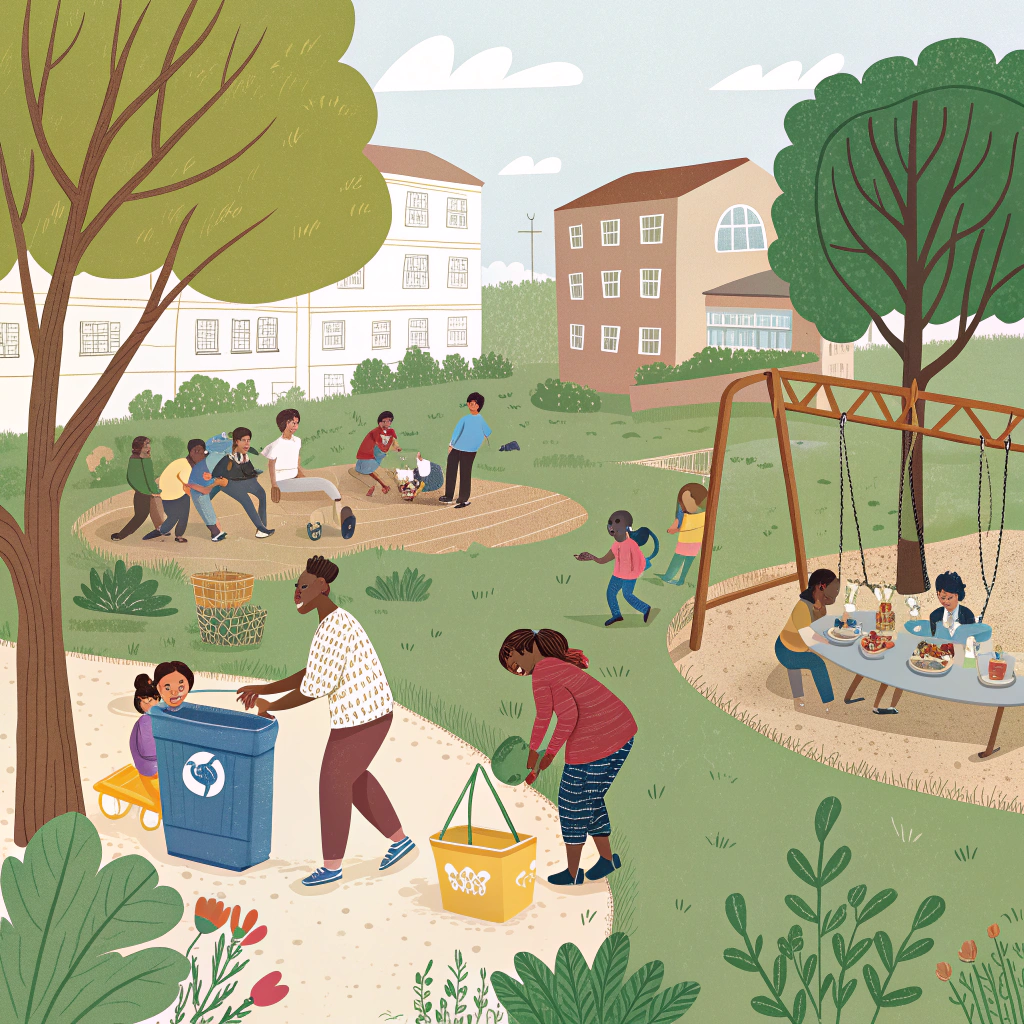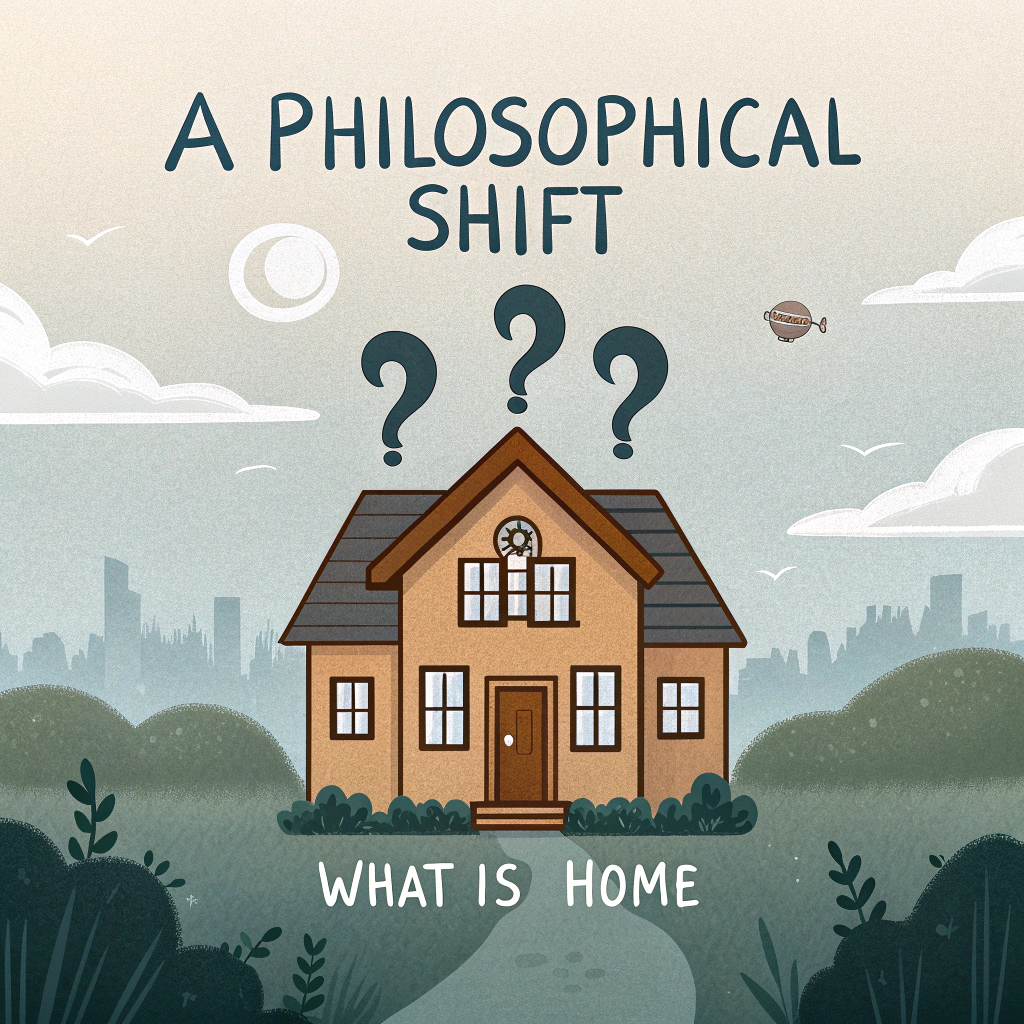
Homes of 2050: The Evolution of Everyday Living
In 2025, our homes are already undergoing a quiet transformation. Smart devices are replacing traditional appliances, remote work is blurring the lines between private and professional life, and sustainability is no longer a niche concern but a mainstream demand. But what will homes look and feel like in 2050? As we project forward, it becomes clear that the homes of 2050 will not simply be more technologically advanced—they will be more human-centered, more adaptable, and more integrated into the natural and digital worlds.
This article explores the key trends, innovations, and societal shifts that are expected to define the evolution of everyday living over the next 25 years.

1. Smart Homes: Beyond Convenience
In 2050, smart homes will go far beyond voice assistants and programmable thermostats. Powered by artificial intelligence, machine learning, and next-generation sensors, homes will anticipate needs, optimize energy usage, and monitor health.
Imagine a home where:
- Lights adjust automatically based on your mood and time of day.
- Smart kitchens prepare meals tailored to your nutritional needs.
- Bathrooms analyze waste to detect early signs of illness.
- AI home managers adjust the environment in real-time, based on biometric data collected from wearable devices or even embedded sensors in the floor.
Rather than being reactive, homes of 2050 will be proactive. They won’t just follow commands; they will learn, adapt, and evolve alongside their occupants.
2. Sustainable Living: A Necessity, Not a Trend
The climate crisis is no longer a distant threat—it’s a present reality. As resources become scarcer and environmental challenges intensify, sustainability will be the cornerstone of future housing design.
Key Features of Sustainable Homes in 2050:
- Net-zero or net-positive energy buildings, powered by solar, wind, or kinetic energy systems.
- Green roofs and vertical gardens, improving insulation while producing food and purifying the air.
- Closed-loop water systems, including greywater recycling and rainwater harvesting.
- Smart waste management, with AI-driven sorting and composting units.
- Biophilic design, integrating natural elements to enhance mental well-being and reduce stress.
Construction materials will also shift dramatically. Traditional concrete and steel may be replaced by carbon-negative materials such as hempcrete, mycelium, and 3D-printed biodegradable components.
3. Reimagining Space: Flexible and Multi-Purpose Homes
The way we use space has already begun to change, especially in the wake of the COVID-19 pandemic. By 2050, the distinction between living, working, and leisure spaces will continue to blur.
Expect homes to feature:
- Modular walls and furniture that can be rearranged depending on the time of day or activity.
- Convertible rooms—a bedroom by night becomes a gym or office by day.
- Augmented reality (AR) zones for immersive remote collaboration, learning, or entertainment.
- Soundproof pods or privacy bubbles, especially important for multi-generational households.
These innovations are about more than maximizing square footage—they reflect a fundamental shift in lifestyle, where homes must adapt to rapidly changing personal and societal needs.
4. Health and Wellness at the Core
Homes in 2050 will be designed not just for shelter and utility, but as active contributors to physical, mental, and emotional health.
Health-centric features may include:
- Air purification systems that filter pollutants and allergens using real-time environmental data.
- Circadian lighting that mimics natural daylight cycles to support better sleep and mental function.
- Smart flooring that tracks posture, gait, and fall risk—ideal for aging populations.
- Hydroponic and aquaponic walls, enabling residents to grow fresh produce indoors.
Additionally, mental wellness will be a priority. Quiet zones, meditation pods, and digitally controlled nature soundscapes could become common design elements in homes across all demographics.
5. Connected Communities and Shared Resources
The individual home in 2050 will not exist in isolation. Instead, it will be deeply embedded within interconnected neighborhoods that share energy, data, resources, and even responsibilities.

Examples include:
- Microgrid communities, where homes share power generated from solar or wind, increasing efficiency and reliability.
- Shared workspaces integrated into residential buildings, reducing the need for commutes.
- Community food systems, including urban farms, communal kitchens, and local food exchanges.
- Neighborhood health hubs, offering basic care and monitoring in residential zones.
These developments promote social cohesion while addressing the economic and environmental pressures of urban life.
6. Urban Transformation: Vertical and Virtual Cities
As urban populations grow, the only direction to build is up—or online.
In 2050, expect cities to feature:
- Vertical neighborhoods—towering skyscrapers that function like miniature cities with homes, schools, markets, and parks stacked vertically.
- Automated transport hubs, seamlessly connecting high-density housing with other city zones.
- Digital twins of entire cities—virtual environments used for planning, safety simulations, and even virtual commuting.
- Mixed-reality public spaces, blending physical architecture with immersive digital overlays.
Smart infrastructure will ensure these complex environments remain efficient, resilient, and safe, using data to constantly adjust lighting, traffic, waste, and air flow.
7. Homes That Grow With You
One of the most radical ideas for future housing is adaptive architecture—structures that literally grow, change, or self-repair.
Concepts in development include:
- Self-healing materials, such as bio-concrete that repairs its own cracks using embedded bacteria.
- Shape-shifting walls and roofs that open and close depending on weather and daylight.
- 3D-printed homes, created quickly and affordably with robotic builders.
- Bio-integrated structures, where homes incorporate living trees and plants not just for aesthetics but for structural support.
As lifespans increase and families become more fluid, homes will need to accommodate life’s many changes, from child-rearing to caregiving to retirement.
8. The Role of Artificial Intelligence and Data
At the core of the home of 2050 is data—collected, analyzed, and applied in ways that serve the resident’s comfort, safety, and well-being.
AI will do more than manage appliances; it will coordinate entire domestic ecosystems, predicting household needs, flagging maintenance issues, and optimizing environmental impact.
However, this will also raise significant ethical and privacy challenges. How much of our lives are we willing to share with AI? What regulations will be in place to ensure this data isn’t exploited? The homes of the future must balance intelligence with integrity.
9. Affordability and Access
One of the major questions facing the future of housing is whether these innovations will be widely accessible—or only available to the wealthy. As housing affordability becomes a global issue, there is a growing movement toward inclusive design and technology.
Possible solutions include:
- Mass-produced modular homes, built quickly and cheaply using sustainable materials.
- Public-private partnerships to fund smart, affordable housing in urban and rural zones.
- Government incentives and regulations, ensuring eco-friendly features are not limited to luxury developments.
- Universal design principles, making homes accessible for people of all ages and abilities.
Innovation will only be truly successful if it lifts quality of life for everyone—not just a privileged few.
10. A Philosophical Shift: What Is “Home”?

Perhaps the most profound change by 2050 won’t be technological or architectural—it will be philosophical. As mobility increases and lifestyles diversify, the meaning of “home” will evolve.
- For some, home will be digital—a virtual environment where work, play, and community are experienced online.
- For others, home will be mobile—tiny houses on wheels, floating pods, or modular shelters that can be moved based on opportunity or climate.
- For many, home will be shared—a blend of private and communal living designed to reduce costs and increase connection.
The emotional connection to home will endure, but its physical form will be more fluid, diverse, and dynamic than ever before.
Conclusion: Building the Future Together
The homes of 2050 will be smarter, greener, more adaptable, and more connected—not just to the internet, but to the people and ecosystems around them. They will reflect a changing society, one where well-being, sustainability, and inclusivity are prioritized alongside innovation.
But this future won’t build itself. It will require the collaboration of architects, technologists, urban planners, governments, and everyday citizens. We must ask hard questions about equity, ethics, and ecology, even as we embrace the wonders of science and design.